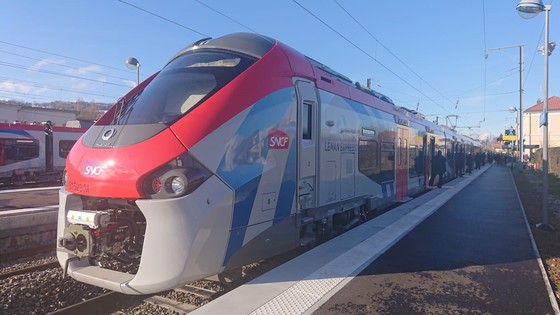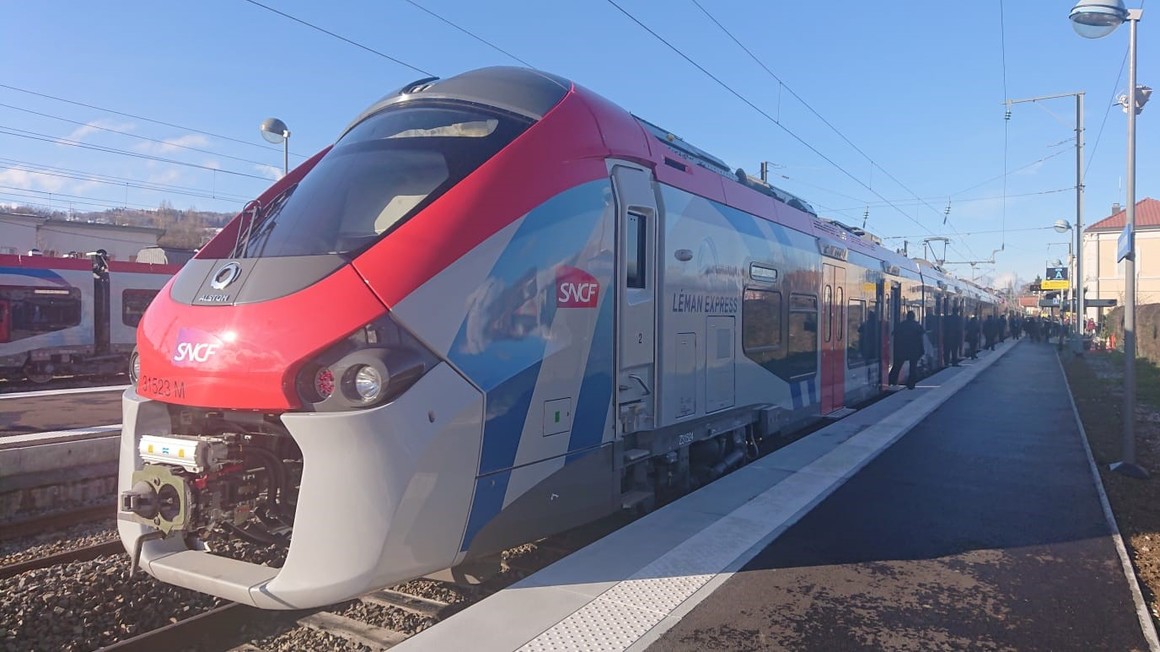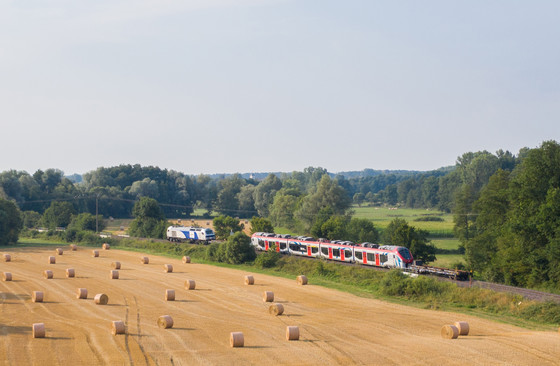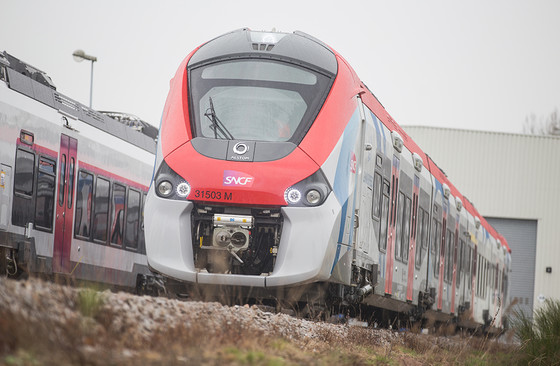
Alstom delivers 17 Coradia Polyvalent trains and implements on-board digital solution for the French-Swiss Léman Express rail service
Alstom delivers 17 Coradia Polyvalent trains and implements on-board digital solution for the French-Swiss Léman Express rail service
Press contacts - Southeast France (Fabienne Broccard)
Fabienne Broccard
Send an email12 December 2019 – Today Alstom's Coradia Polyvalent regional trains transported their first passengers at the official inauguration of the Franco-Swiss CEVA[1] line, Europe's largest cross-border regional express network. Alstom deployed the complete on-board digital solution on all 17 trains delivered by Alstom and on 23 other trains ordered in Switzerland. Full commercial service by the Auvergne-Rhône-Alpes region begins on 15 December.
"We are proud to be travelling for the first time on board the Léman Express version of our regional train, Coradia Polyvalent. This event marks the operational launch of our Baseline 3 digital solution ensuring the increase of traffic capacity between the Auvergne-Rhône-Alpes French Region and the Geneva Canton in Switzerland. I am sure that this day is one of many for the future of Europe and a necessary increase of rail connections between countries" said Jean-Baptiste Eyméoud, President of Alstom in France.
The Coradia Polyvalent electrical regional trains will run on the four lines of the Léman Express, providing a comprehensive service from Bellegarde to Saint-Gervais (East-West), Annecy to Evian (North-South) and of course the connection with Switzerland (Cantons of Geneva and Vaud).
The Coradia Polyvalent Léman Express trains (Régiolis contract) belong to Alstom's Coradia range, of which 326 trains have been already ordered in the world by 9 French regions and 61 Coradia Liner by the French state, the authority responsible for France’s TET (intercity) trains. Nearly 95 million kilometres have already been covered by Régiolis in commercial service.
The trains have been adapted to the specific characteristics of the Franco-Swiss cross-border CEVA line: configured in their suburban version, each 72-metre-long train can carry up to 204 seated passengers at a maximum authorised speed of 140 km/h in Switzerland. Designed to ensure cross-border connections with ERTMS technology, the Coradia Polyvalent Léman Express trains can run on 3 types of network voltages.
Alstom's Atlas ETCS Baseline 3 on-board signalling solution complies with the latest European standards for rail interoperability. It enables trains to travel from one country to another in completely fluid, safe and reliable fashion. Alstom already commissioned it last summer for the cross-border link between France and Luxemburg using Alstom's regional trains. This was a first for Baseline 3 in cross-border mode in the signalling market. Implementing this solution on Léman Express takes into account this first successful return on experience.
To optimise the fluidity of exchanges and reduce stopping time in stations, the Coradia Polyvalent Léman Express trains are equipped with a full low-floor, seven doors on each side to facilitate passenger flows, all with bridge plates, and a large reception area on the platforms. Coradia Polyvalent complies with the PRM TSI[2] standard. The interior offers increased comfort thanks to seats equipped with individual reading lights and electrical sockets, as well as spaces dedicated to bicycles and luggage. Large windows and reduced noise levels also improve the quality of the journey.
Manufacturing Coradia Polyvalent involves more than 4,000 jobs in France at Alstom and its suppliers. Six of Alstom's 13 sites in France are involved in the project: Reichshoffen for the design and assembly, Ornans for the engines, Le Creusot for the bogies, Tarbes for the traction chains, Villeurbanne for the on-board computerised systems and signalling products, and Saint-Ouen for the design and the ETCS Baseline 3 system.
[1] Cornavin – Eaux-Vives – Annemasse (230 km / 45 stations)
[2] Technical Specification for Interoperability - Persons with reduced mobility.



